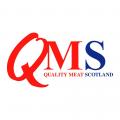
DESPITE the lack of clarity on the impact of Brexit available to businesses operating in the Scottish red meat industry, there are signals that the industry is committed to weathering the storm and investing for the future.
Speaking at the launch of Quality Meat Scotland’s new ‘Scottish red meat industry profile’, Stuart Ashworth, head of economics services, said that two years on there was now an urgent need for clarity to allow businesses to plan for the future.
“Without question there is concern that businesses are treading water during this period of uncertainty when we still have little clarity about the implications of Brexit.
“Two years on and we are little clearer on what Brexit may mean for our industry. We have no vision of what agricultural policy may look like and producers are still assimilating the changes introduced in the wake of the last CAP reform.
“However, our industry has a great track record of resilience and adapting to change and there are welcome indications that businesses – including several processors – are investing and adapting to help future-proof their operations,” said Mr Ashworth.
A look at census and other market information, said Mr Ashworth, shows there is inevitably, however, a degree of “treading water”.
“Calf registrations in Scotland in 2017 slipped for a second year, although they remained higher than in 2013 and 2014. Calvings in the first quarter of 2018 were unchanged on year-earlier levels but with carcass weight falling in response to market signals we have seen a decline in the volume of beef Scottish abattoirs handled.”
Processors have, he said, generally found it difficult to achieve higher wholesale prices and, with farmgate prices in 2017 being particularly strong for cattle and pigs and to a lesser extent sheep, processor margins are under pressure and volume becomes a key driver for profitability.
Ewe numbers did show some marginal increase in 2017 but the impact of the weather in early 2018 will have more than offset this, said Mr Ashworth. While the pig sector saw some signs of expansion, production was disrupted by the fire at Brechin abattoir in 2017 and rising feed prices may dampen producers’ margins.
Looking at the figures revealed in the newly-published ‘Scottish red meat industry profile’” Iain Macdonald, senior economics analyst with QMS, said overall the total volume of meat produced in Scottish abattoirs during 2017 was down 3.9% compared with 2016, at around 212,100 tonnes. In total, 24 licensed red meat abattoirs operated in Scotland during 2017 generating a total turnover of £892 million. This was up £32 million year-on-year, by around 4%.
Total employment in abattoirs is estimated to have risen by 1% to 2900, said Mr Macdonald.
“Of this total number an estimated 51% of employees were non-UK EU nationals, with this figure varying considerably by business-size and location. In the larger processors, particularly in the North-east, the number of non-UK EU nationals was closer to accounting for two-thirds of the total staff.”
A weak sterling underpinned prices for finished livestock, said Mr Macdonald.
“However, the store lamb trade did see significant volatility as hogg prices failed to take a seasonal upswing ahead of Easter. Set against the general lift in prices for finished livestock was the knock-on impact of a recovery in global commodity prices of the cost of inputs.”
Overall, 2017 saw further growth in the UK red meat trade.
“The weaker sterling supported exports for a second year, pushing them 5% higher in volume while also boosting export revenues and margins.
“However, total imports eased back, despite growth for beef and pork, as sheepmeat volumes contracted sharply, mainly down to a combination of tight supplies and rising prices in New Zealand.”
In summary, 2017 was a largely positive one for the Scottish red meat industry with weather less extreme and farmgate prices generally above 2016 levels.



Comments: Our rules
We want our comments to be a lively and valuable part of our community - a place where readers can debate and engage with the most important local issues. The ability to comment on our stories is a privilege, not a right, however, and that privilege may be withdrawn if it is abused or misused.
Please report any comments that break our rules.
Read the rules here